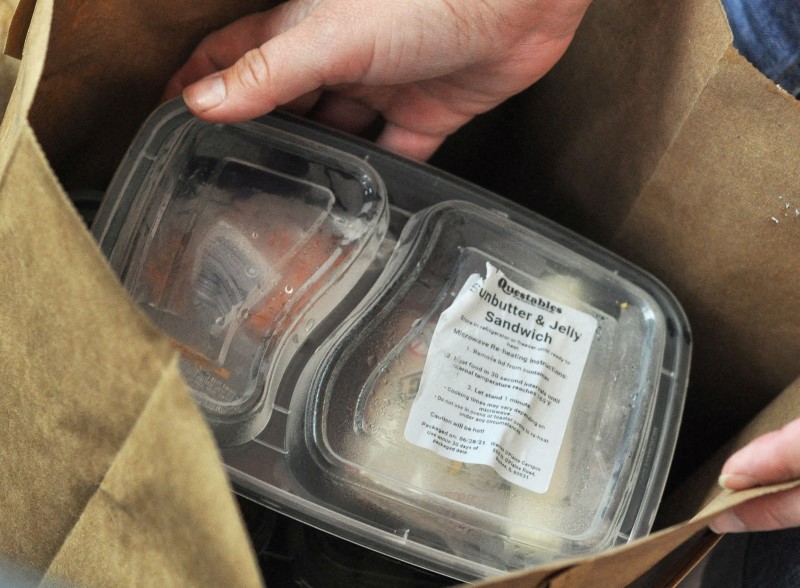By Christopher Walljasper
CHICAGO (Reuters) -The U.S. Agriculture Department is providing up to $1.5 billion to help school meal programs weather the supply chain crunch, Agriculture Secretary Tom Vilsack said on Friday.
Procuring large amounts of food has become difficult because of delays in shipments, a lack of certain products, high costs and labor shortages during the COVID-19 pandemic.
USDA is tapping the Commodity Credit Corporation (CCC) for funding, providing $1 billion for schools to purchase food for their meal programs and another $500 million for the purchase of local foods to be distributed to schools, Vilsack said.
"This will result in a 5% increase in what school districts normally have available," Vilsack said at Gourmet Gorilla, a food service company that prepares 40,000 meals daily for schools in the Chicago area.
Shortages have made meal planning impossible, said Colletta Hines Newell, director of food services for Arlington Heights School District 25 outside Chicago during a listening session with the secretary.
"We came up with six different substitutes if they can't get a hamburger," she said. "Some days, they can't get any of those."
When items are available, prices can be wildly higher, she said.
"I went from using a commodity hamburger that was 22 cents, to the other day, saying 'go ahead and buy that hamburger.' It was $1.86," she said.
The 1930s-era CCC has generally been tapped to provide subsidies for farmers after natural disasters and most recently after the Trump administration's trade war and the economic fallout from the COVID-19 pandemic. The CCC gives USDA broad authority to make direct payments to growers when crop prices are low.

The number of Americans facing hunger remains higher than before the pandemic, and the Biden administration has sought to ramp up funding for food stamps and school meal programs.
The funds should be available starting in January.